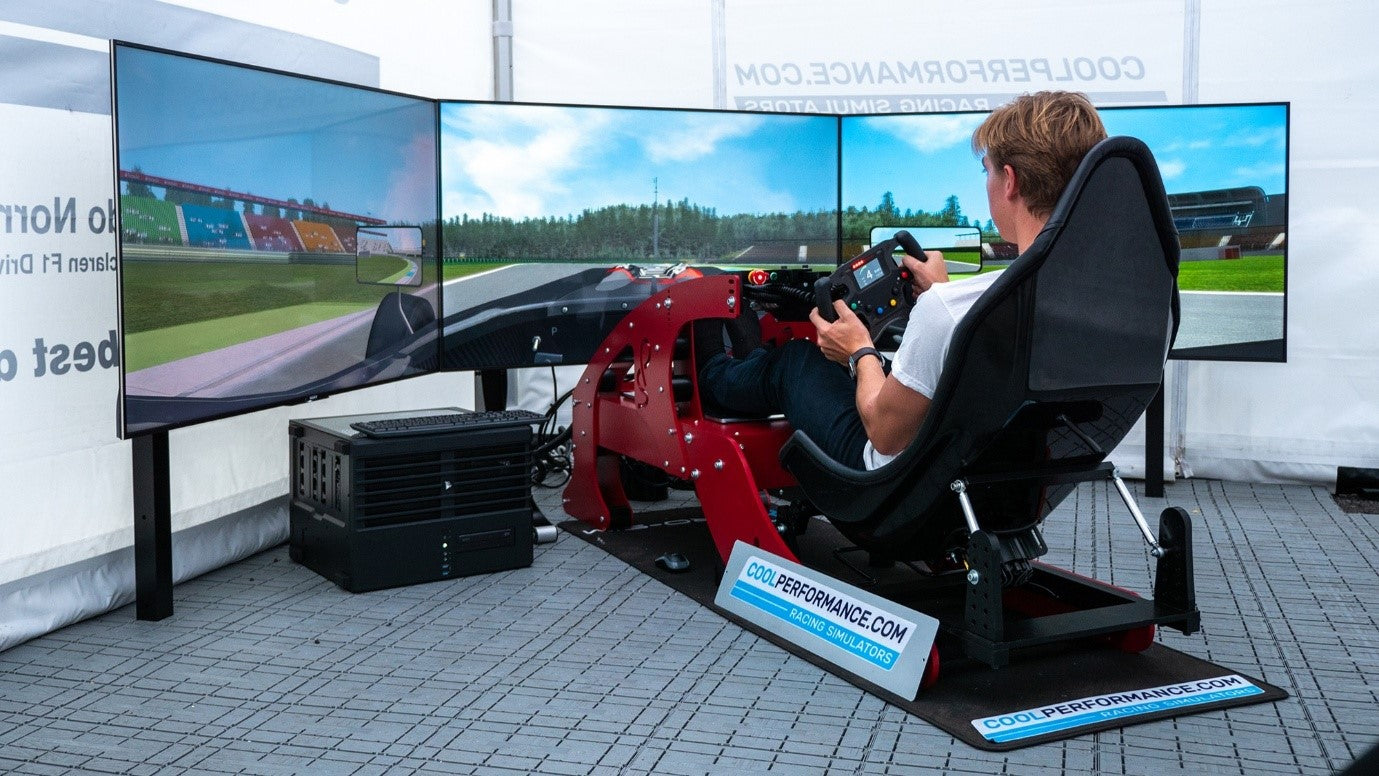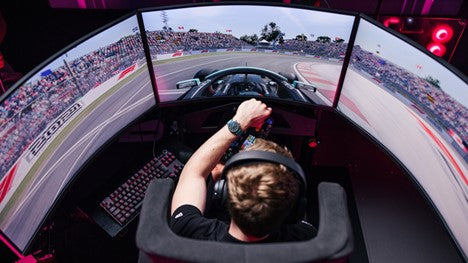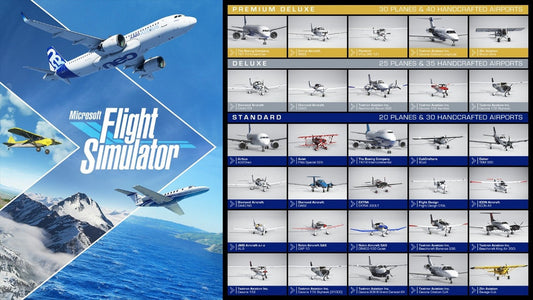The Physics Behind Racing Simulation – Complete Guide

Racing simulation games are built with either one of two play styles in mind: realistic and arcade. Both are equally acceptable and offer different types of immersion.
Arcade sim racing is more inclined toward enjoyment and thrill, which you often see in the form of exaggerated car handling and simplified racing mechanics. One typical example of such a game would be Blur from 2010. However, it is realistic sim racing that appeals more to sim racers. Popular examples include iRacing and the Gran Turismo series.
But how do racing simulators replicate real-world racing scenarios? Well, they do so by precisely mimicking everything from car suspensions and weight distribution to track dynamics and weather effects to deliver a true-to-life experience.
For a more in-depth explanation, continue reading this article, where I’ll explain everything that you need to know about the physics behind racing simulations and why you get that feeling of sitting in a real-life sports car while racing in a racing simulator.
Key Components Behind the Physics of Racing Simulation
Tire Dynamics

Let’s kick things off with one of the most important components in the physics behind racing simulation—tire dynamics. Why? Because no matter how powerful your car is, it's the tires that connect it to the road. In real racing, from how fast you're going and how hard you’re braking to how sharp you’re turning, tires react to every little input from the driver.
In a simulator, tire dynamics include things like grip, wear, heat, pressure, and something called slip angle, which is basically the small difference between where a tire is pointing and where it’s actually going. All these small details affect how the car responds, especially when you're cornering at high speeds or braking hard.
For example, in dry conditions, racing slicks offer maximum grip, while in rainy weather, you’d switch to wet tires with grooves to avoid slipping. Simulators that take tire conditions into account make the whole experience feel incredibly real. You’ll notice your car behaves differently based on tire temperature or how worn out the tires are during a long race.
Weight Distribution

Weight distribution is all about how the car’s weight is spread across its front and rear wheels. It sounds like a small detail, but in racing, both real and simulated, it makes a huge difference in how the car feels and performs on the track.
For example, when a car speeds up, the weight shifts toward the rear tires. This helps the back tires get more grip. On the other hand, when you hit the brakes, the weight moves forward, giving more grip to the front tires and helping the car slow down safely. Even turning affects weight, too much or too little on one side, and the car could slide or lose control.
Racing simulator technology tries to copy this weight transfer as accurately as possible. The way the engine is placed, the design of the car body, and how much load the car is carrying, all these things matter. If weight distribution is not handled well, the car may feel “off” when driving, especially while cornering or braking.
That’s why sim developers focus so much on this aspect. It’s a key part of how racing simulators replicate real-world racing. And of course, the physics behind racing simulation would not feel realistic without getting this part right.
Suspension Systems

Suspension systems are a big part of what makes a car feel stable and comfortable, whether on the road or in a racing simulator. In real-world racing, the suspension helps the car absorb bumps, stay balanced in corners, and keep the tires connected to the track. All of this needs to be carefully simulated to make the game feel realistic.
In racing simulators, the suspension system is carefully modelled to react just like it would in real life. It includes parts like springs, shock absorbers, control arms, and stabiliser bars. Each of these has its own job. For example, springs help control ride height and softness, while shock absorbers handle sudden bumps or jolts from the track. Likewise, stabiliser bars help keep the car steady when turning at high speeds.
When you drive over curbs, hit a bump, or take a sharp corner in a sim racing game, the suspension system decides how the car will respond. Will it stay stable? Will it bounce or lean too much? These responses are controlled by how well the suspension is simulated.
Good racing simulator technology uses advanced physics models to simulate how these parts work together. It takes into account things like weight transfer, speed, and road texture. This is why in a high-quality sim, you can actually feel the car shift and adjust, just like a real vehicle would.
Racing Terrain

Now let’s talk about something that can completely change how a car feels in a racing simulator: racing terrain. In real life, the type of surface you drive on has a huge impact on how your car behaves.
Different terrain types, like asphalt, gravel, mud, or snow, each bring their own challenges. Asphalt is the most common surface in track racing. It’s smooth, consistent, and gives you the most grip, allowing for higher speeds and tighter turns. But once you move off the tarmac, things start to get tricky.
Take gravel, for example. It’s loose and uneven, so your tires don’t grip as well. You feel the car sliding more, and you’ll need to be careful with steering and braking. Then there’s mud, which can slow your car down and make it harder to control. If you accelerate too hard, the tires spin and you lose traction. And driving on snow? That’s a whole new level of difficulty, with lots of sliding and slower response.
High-quality racing simulator technology recreates all of these surface types using complex physics. It forces players to adjust their driving style depending on the terrain, just like a real driver would. Without terrain simulation, the physics behind racing simulation would feel flat and lifeless, no matter how good the graphics are.
Weather Effects

Weather plays a huge role in real-world racing, and the same is true in sim racing. To truly feel real, a racing simulator technology must recreate how different weather conditions, such as rain, snow, fog, and even temperature changes that can affect how the car handles and how the player drives.
Take rain, for example. When the road is wet, tires don’t grip as well. Braking takes longer, and it’s much easier to slide or spin out. That’s why in racing simulators, driving in the rain feels totally different from racing on a dry track. You have to brake earlier, accelerate more gently, and avoid sudden steering.
Snow and ice make things even harder. The road gets very slippery, and keeping control of the car becomes a real challenge. You need to adjust your throttle, brakes, and even your cornering style to stay on track.
Some advanced simulators also take temperature into account. Hot weather can make your tires wear out faster or cause your engine to heat up. Cold weather, on the other hand, gives the engine more power but can make the tires harder and less grippy.
As seen above, getting weather effects right is a key part of the physics behind racing simulations.
Track Design

Last, but not least, track design is one of the most important parts of making a racing simulator feel real. In real-world racing, tracks are never just flat circles; they have hills, slopes, sharp corners, long straights, and different types of road surfaces. Racing simulator technology tries to copy all of this to give players a driving experience that feels just like the real thing.
Good track design includes details like elevation changes (going uphill or downhill), banked corners (sloped turns), and different turn shapes. These elements affect how the car behaves. For example, going uphill slows the car down, while a banked corner can help maintain speed through a turn.
The material used on the track surface also matters. Asphalt, gravel, or dirt all have different levels of grip, and this directly affects tire dynamics. On a low-grip surface like gravel, the car slides more, and the player needs to steer carefully and brake earlier.
By combining all these features, the physics behind racing simulation becomes much more lifelike.





